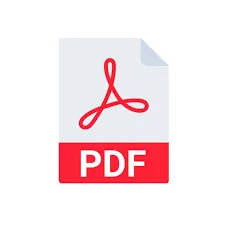Writing
Our Intent
At St. Mary's, we want every child to see themselves as a writer. Our writing curriculum gives all pupils — whatever their starting point — the chance to become confident, independent and successful writers who enjoy expressing their ideas and take pride in their work.
Through our carefully planned approach, we aim for every child to:
-
learn to write fluently and with purpose;
-
develop their own unique writer’s voice; and
-
use writing to communicate, explore and make sense of the world around them.
We recognise that spoken language is the foundation of good writing. Children need to talk, listen and play with language before they can write well. Our lessons give them time to explore ideas through talk, drama and reading high-quality books.
We follow Ready Steady Write by Literacy Counts, an award-winning, research-informed programme that supports children to master the skills of writing through rich, engaging texts. From the earliest years onwards, children experience a wide range of literature that inspires them to write for real audiences and purposes.
Above all, we want our pupils to leave primary school as enthusiastic, capable writers who are ready for the next stage of their education — and who see writing as a powerful tool for learning and self-expression.
Our Implementation
Writing is taught through a clear, structured sequence of lessons using Ready Steady Write. Each unit is based on a high-quality text that captures children’s imagination and builds their vocabulary. Teachers use this as a springboard for:
-
Sentence accuracy — building secure understanding of grammar and punctuation;
-
Exploring structure and purpose — learning how different kinds of writing are organised and why;
-
Planning, writing and editing — drafting pieces for real audiences and improving them through feedback.
Teaching strategies include:
-
Modelled and shared writing – teachers “think aloud” as they write, showing children how ideas develop, how choices are made, and how sentences can be improved.
-
Partner and group talk – children share ideas, discuss texts and support each other to use new vocabulary.
-
Regular editing opportunities – pupils learn to review and improve their own and others’ writing.
-
Working walls – classroom displays grow with the unit, showing examples, reminders and shared success criteria to support all learners.
Every classroom has a writing resource box filled with key texts, examples and practical resources to inspire creativity. In the Early Years, literacy is brought to life both indoors and outdoors through storytelling, play and exploration.
Teachers adapt lessons to meet the needs of every learner. They use assessment information to identify next steps and ensure progress for all pupils.
Inclusion is at the heart of our practice:
-
For children with English as an additional language (EAL), teachers model language clearly, use visuals and technology, and provide rich opportunities for talk with fluent peers.
-
For children with special educational needs and/or disabilities (SEND), teaching is personalised. This may include additional scaffolds, use of technology, targeted small-group work, or carefully modelled examples.
-
More confident writers are challenged to extend ideas, experiment with style, and make links between reading and writing.
Our Impact
Our approach ensures that all children make strong progress in writing. They learn to plan, draft and edit with growing independence, and to take pride in presenting their work clearly and accurately.
We see the impact of our writing curriculum in classrooms every day:
-
Children talk with enthusiasm about their writing and the books that inspire them.
-
Pupils write for a range of real purposes — letters, reports, stories, poetry, and information texts.
-
Writing is displayed and celebrated around school.
-
Children become reflective learners who can evaluate and improve their work.
Teachers assess writing continuously through observation, discussion and review of pupils’ work. After each unit, teachers record what children have achieved and plan next steps. Moderation within and across year groups ensures consistency and high expectations. Teachers, together with our subject leader, analyse writing outcomes termly to identify strengths and areas for development. Findings are shared in Pupil Progress Meetings so that every child receives the right support and challenge.
Further Information and Key Documents
 Ready Steady Write Curriculum Coverage
Ready Steady Write Curriculum Coverage






